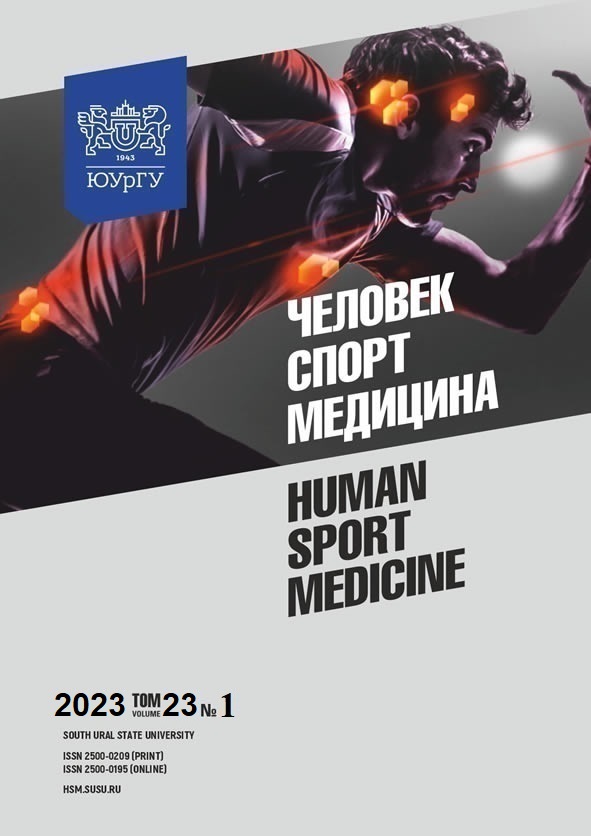PHYSIOLOGICAL BASIS FOR CONSISTENT MOTOR REGIME CORRECTION IN YOUNG PEOPLE WITH CONNECTIVE TISSUE DYSPLASIA AND PERIODONTITIS
Abstract
Aim. The paper aims to provide a physiological assessment of variability in habitual motor activity among young people with connective tissue dysplasia and periodontitis and to identify individual and typological criteria for effective and consistent motor regime correction. Materials and methods. The study involved 363 males and females aged from 20 to 35 years, divided into three groups: group I (71 males and 80 females), group II (46 males and 57 females) with an undifferentiated form of connective tissue dysplasia (CTD), group III (42 males and 67 females) with CTD and generalized periodontitis of mild and average severity. The following methods were used: comprehensive health examination, pace counting, cardiovascular measurements, including HR, SBP, and DBP (A&D, Japan), functional tests (Ruffier Dickson test, Martinet – Kushelevsky test), and the short form 36 Health Survey. The data obtained was processed with Microsoft Excel Statistics 26.0 (non-parametric tests: Pearson χ2 and Mann – Whitney, Pearson and Spearmen correlation coefficients). Results. The study presents a physiological assessment of variability in habitual motor activity among young people with connective tissue dysplasia (CTD), CTD and periodontitis. Therefore, reference (centile) values for a daily amount of locomotion (DAL) that characterize people with low, medium, intensive, and very intensive physical activity (PA) were provided. These data are the basis for the development and implementation of an algorithm for a 1-centile increase in DAL every 2 weeks during 6 months in groups II and III until optimal results (75–90 centiles) are achieved and preserved. Conclusion. Physiological analysis of the proposed algorithm showed better physical performance, increased number of people with a normotonic type of pulse and blood pressure recovery after physical activity, decreased recovery time, and improved quality of life (both psychological and physiological).
References
References on translit















